Hello...couldn't start tonight's chat without reciting The Road to Mandalay, especially for Larry Morgan...
By the old Moulmein Pagoda, lookin' lazily at the sea,
There's a Burma girl a-sit tin', and I know she thinks o' me;
For the wind is in the palm trees, and the temple bells they say;
'Come you back you British soldier; come you back to
Mandalay!
Come you back to Mandalay,
Where the old Flotilla lay;
Can't you 'ear their paddles chunk in' from Rangoon to
Mandalay?
Where the flyin' fishes play,
An' the dawn comes up like thunder outer China 'crost the
Bay! By Rudyard Kiplind
Aah...we did reach Mandalay, even if Kipling never did. I am sitting on the deck just after dusk, warm light breeze; the pagodas and stupas lighted all around us. We are moored across the river on the West Bank from Mandalay. The lights of the city, and for some reason fireworks are becoming visible as I sip my gin and tonic. Except for the hum of the second Pandow River cruiser moored beside us it is a quiet peaceful evening for being in the middle of the heart beat of the river.
Mandalay has grown into a city of 1.5 million...so like many tropical cities of this size it is hot and dusty, with chaotic traffic, There are 900 registered motorcycle drivers and 1.3 motorcycles...so they are popular and numerous! I zipped down to hog the front seat of the bus for the first time so I could take some photos of the streets. I have included a few of them, especially for Juanita who can compare it to 2000 when she and Jim were here. I liked Mandalay...it seemed more organized, cleaner and greener than Yangon. I think I could walk the sidewalks here without falling down a rabbit hole.
The Lonely Planet pretty much pans Mandalay...calls it "a traffic-chocked grid of interminable straight roads full of anonymous concrete buildings" adding..."you can escape the fumes and the architectural banalities of the main streets in quarters full of craft workers and tree-shaded monasteries." I don't agree..but we in fact did just that today, remembering the history of the Mandalay region.
There are the remnants of four royal cities spanning more than 500 years of Burmese history. The first of the great centres were built on the west side of the river at Sagaing where we are tied up. There is a large concentration of religious monuments, some lighted up tonight...dating from the 14th century. There are over 6,000 Buddhist nuns and monks living today in the monasteries on the hillside above our jetty. They are visible everywhere...some with their begging bowls, some eating at the food stalls, some riding and hanging on the roofs of the buses and a few having intense conversations on their cell phones.
We rode up the the bumpy metalled road in local transportation...8 in the back of the little pick-up trucks to the gilded Soon U Ponya Shin...which of course houses a huge smiling Buddha which was being covered with gold leaf. Beyond the east terrace was a wonderful view over the Irrawaddy and all the temples to Mandalay. From another terrace we could look down on the two bridges that cross the Irrawaddy. From the temple we bounced down and over to the Umin Thounzeh, a cave temple housing 45 Buddha images arrayed in a grand semicircle shrine. There were plaques with names of donors over they years...we counted 10 Canadians among them.
In the morning we visited the Mandalay Palace in the heart of the city. It was the seat of the last rulers of independent Burma....built in the mid-19th century by King Mindon, but is mostly associated with his son, Thibaw who lost to the British and was expelled in 1885. The complex was commandeered by the British army for use as a barracks, before being destroyed by Allied bombs in 1945 while it was occupied by the Japanese. I gather the present structures bear only a passing resemblance to the richly carved and gilded teak originals. You do get an idea of the moat, the great audience hall and the lion throne. It reminds one slightly of the Forbidden City in Beijing.
The other morning visit was to the Mahamuni Temple...the country's second most revered shrine after the Shwedagon Pagoda in Yangon. It's Buddha is said to be one of only five likenesses of the historical Buddha cast in his lifetime. No matter it was probably made 500 years later. Only men are allowed to press gold leaf on the figure--so much has been added over the years that large lumps of solid gold have formed. None of us were very impressed I must say.
In a hall off the main temple are six Hindu-Buddhist figures plundered from Angkor Wat. Worshippers traditionally rub various body parts of the images in the hope of curing medical afflictions. Some bits, as you might imagine, are rubbed right off. Gary rubbed a head...he thinks that's where he needs the most help; I stuck with rubbing for a hip cure!
The main thing we enjoyed were the kids learning to hit the gongs to get the right tone. There was a line of gongs with small sticks, just the right size.
Stone masonry and the carving of hundreds of Buddhas out of marble filled the street leading up to the Temple. Note in my photos the masons look to be about 12, have no eye or ear protectors...or breathing masks. The street to the temple was lined with similar shops. They have moved on from cutting with chisels and mallets to Chinese made cutters and sanders.
We spent a good part of the day manoeuvring the bus along small lane ways where the craftsmen live and work. The ride was a great experience without even visiting the workshops. I hope a couple images give the picture.
Mandalay is one of the few places in Myanmar where gold leaf prized by Burmese as a temple offering is still made in the traditional way. Teams of pounders thump at booklets of bamboo pages between which tiny grains of gold have been placed. The resulting foil is cut, replaced and thumped again for hours until it is paper thin. Bundles of these papers are purchased for offerings. It seemed like a hard way to make a living.
We went onto a silversmith workshop where silver wedding bowls and all kinds of other items were being pounded upon. Intricate difficult work...with a fine sales shop in the front. All up and down the streets were other silver workshops...pounding echoed through the street.
And finally we pitched up at a silk factory...we could hear the looms thumping from the bus. Intricate wonderful wedding silk was being woven on one loom by "experts" and more prosaic, but beautiful designs woven on several of the other looms by trainees. Fluorescent lights and work into the night....didn't dare ask how many hours the girls worked...but they were older than 12. Gary bought his longyis and I picked up 5 gorgeous scarves...so everyone knows what to expect for Christmas! That is if I can part with them!
A word about bridges connecting the two banks of the Irrawaddy. The Old Inwa Bridge with 16 spans and two decks (road and rail) used to be the only route across the Irrawaddy from Mandalay when it was built by the British in 1934. They sabotaged it in 1942 by destroying two spans to forestall the Japanese advance. The bridge was repaired 14 years later and served as the main link between the two banks until 2008 when the three-span Ayeyarwady Bridge with four lanes was built next to the old bridge. Our guide calls it the Burmese Sydney Harbour Bridge because of its design. But the oddest thing is it is lower than the old bridge so boats like the Pandaw 2 with three decks can't fit under it during the monsoons. Now that's thinking ahead.
On the southern fringe of Mandalay is Amarapura which was the Burmese capital in 1783 and now is home to perhaps the most iconic sight of Myanmar...U Bein's Bridge, built from the teak timbers from Inwa, the old capital. The bridge spans a neck in Lake Taugmyo 1.1 km wide...the teak walkway...the world's longest...rests on wooden piles which stand at least 20 ft above the waterline in the dry season...like now...but are almost completely submerged during the monsoons.
We joined the throngs, boarded small boats and were rowed out, under the bridge and back to be perfectly lined up for our sunset photos. At just that moment Peter, our Pandaw 2 bartender was rowed up beside us with two Mandalay cocktails in his hands. The group of 24 from the Pandaw rocked in a line of small boats, sipped a lovely drink and watched the sun set over U Bein's Bridge. Some moments are simply magical.
Later tonight Burmese dancers are arriving to entertain us. Hopefully I can stay awake.
Good night
Doreen
Mandalay
Friday, December 02, 2016
![]() Mandalay, Mandalay Region
Mandalay, Mandalay Region
Other Entries
-
10Cochin (Kochi), India.. "Queen of the Arabian Sea"
Oct 2241 days prior Cochin India, Indiaphoto_camera23videocam 0comment 16
Cochin India, Indiaphoto_camera23videocam 0comment 16 -
11A day at the Zoo...Singapore
Oct 2835 days prior Singapore, Singaporephoto_camera31videocam 0comment 13
Singapore, Singaporephoto_camera31videocam 0comment 13 -
12Bali
Nov 0428 days prior Kota Denpasar, Indonesiaphoto_camera33videocam 0comment 7
Kota Denpasar, Indonesiaphoto_camera33videocam 0comment 7 -
13Kalgoorlie and onto Esperance
Nov 0824 days prior Perth, Australiaphoto_camera22videocam 0comment 10
Perth, Australiaphoto_camera22videocam 0comment 10 -
14Hanging out in Albany
Nov 1121 days prior Albany, Australiaphoto_camera18videocam 0comment 11
Albany, Australiaphoto_camera18videocam 0comment 11 -
15Along the Southern Coast of Australia
Nov 1121 days prior Albany, Australiaphoto_camera18videocam 0comment 9
Albany, Australiaphoto_camera18videocam 0comment 9 -
16South West Australia
Nov 1418 days prior Augusta, Australiaphoto_camera24videocam 0comment 4
Augusta, Australiaphoto_camera24videocam 0comment 4 -
17Geographe Bay (Busselton)
Nov 1517 days prior Busselton, Australiaphoto_camera21videocam 0comment 5
Busselton, Australiaphoto_camera21videocam 0comment 5 -
18Perth...from the ridiculous to the sublime
Nov 1715 days prior Perth, Australiaphoto_camera9videocam 0comment 1
Perth, Australiaphoto_camera9videocam 0comment 1 -
1948 Hours in Yangon, Myanmar
Nov 2012 days prior Yangon (Rangoon), Myanmarphoto_camera37videocam 0comment 9
Yangon (Rangoon), Myanmarphoto_camera37videocam 0comment 9 -
20On the Irrawaddy....
Nov 2210 days prior Yangon (Rangoon), Myanmarphoto_camera30videocam 0comment 11
Yangon (Rangoon), Myanmarphoto_camera30videocam 0comment 11 -
21On the Irrawaddy...Still in the Delta...Nov 23rd
Nov 239 days prior Yangon (Rangoon), Myanmarphoto_camera35videocam 0comment 17
Yangon (Rangoon), Myanmarphoto_camera35videocam 0comment 17 -
22Along the Irrawaddy River... Pyay...or Prome
Nov 257 days priorHpa-Anphoto_camera27videocam 0comment 5 -
23Thayet Myo, along the Irrawaddy River
Nov 266 days priorHpa-Anphoto_camera25videocam 0comment 2 -
24Magwe...or how I spent my birthday!
Nov 284 days prior Hpa-An, Internationalphoto_camera27videocam 0comment 10
Hpa-An, Internationalphoto_camera27videocam 0comment 10 -
25Bagan a city of 2,000 temples
Nov 293 days priorMyingyanphoto_camera23videocam 0comment 9 -
26Bagan and Ohn Ne Chaung
Nov 302 days prior Myingyan, Internationalphoto_camera37videocam 0comment 6
Myingyan, Internationalphoto_camera37videocam 0comment 6 -
27Mandalay
Dec 02Mandalayphoto_camera37videocam 0comment 4 -
28Watching the Irrawaddy slip past on the last day
Dec 042 days laterMandalayphoto_camera34videocam 0comment 7 -
29Inle Lake, Eastern Myanmar
Dec 097 days laterTaunggyiphoto_camera51videocam 0comment 16


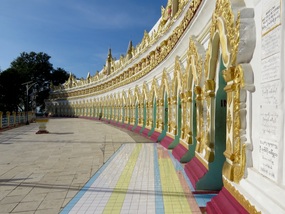
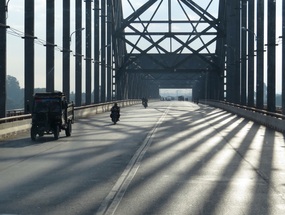
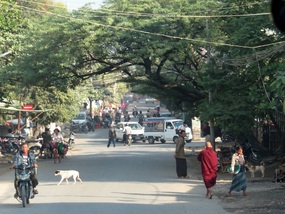
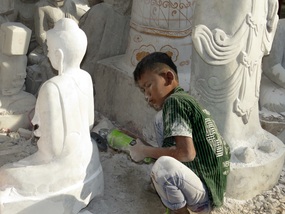
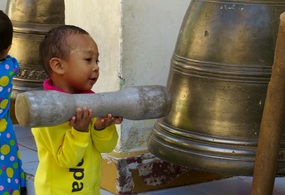

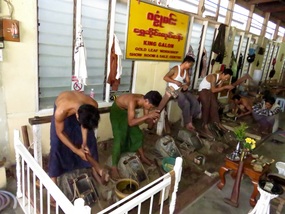

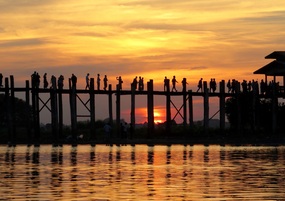








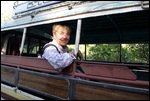
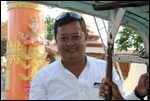
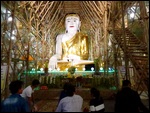
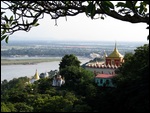
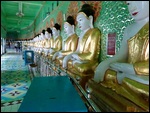
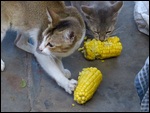
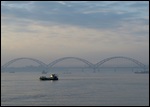
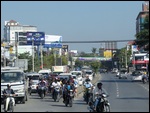
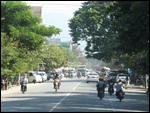
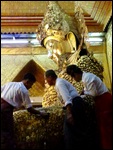

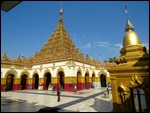
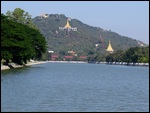
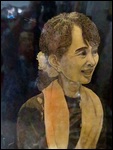
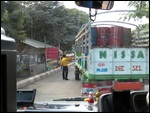
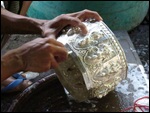
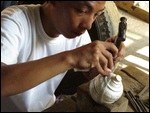
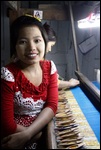
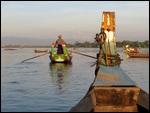
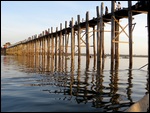
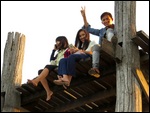
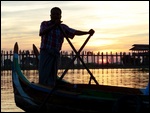
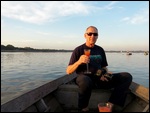

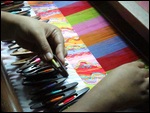
2025-05-23